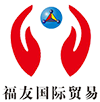1, butyl rubber is isobutylene and a small amount of isoprene copolymerisation of rubber, ultra-low temperature cationic polymerization; currently halogenated butyl rubber accounted for 60% of the IIR dosage; at present there are several types of butyl rubber: halogenated, star-branched, bimodal distribution of IIR(significant improvement in the processability)
2, butyl rubber structure characteristics
① the main chain connected to a large number of methyl, the main chain for the saturated structure, almost no double bond; so the butyl rubber aging resistance and airtightness performance is excellent
② butyl rubber has good tensile crystalline properties, the crystal type is mainly helical, with self-reinforcing properties, unreinforced tensile strength can reach 14-21MPa
③Tg at -75~-65℃.
3、Physical properties
①Excellent airtightness, gas permeability is one order of magnitude smaller than NR.
② excellent anti-ozone aging performance, slightly lower than EPDM
③ general rubber in the worst elasticity, room temperature impact resilience is only 8-11
④ high damping performance: due to the maximum spatial resistance, intermolecular friction
4、Processing performance with precautions:
IIR contains a large number of methyl, when using peroxide vulcanisation, there will be significant degradation; generally use sulfur, phenolic resin vulcanisation
IIR and diolefin rubber compatibility is very poor, poor mixing performance, difficult to form a group of common furnace black, thermal cracking carbon black (alkaline carbon black)
Poor reinforcing effect on IIR Processing Precautions:
Poor mixing ability of butyl rubber, weak self-adhesion and mutual adhesion, poor performance of axle wrapping
Opening can be thin through the method (first with 50% of the rubber thin through the package axis, in the addition of matching agent, matching agent is not eaten up can not be cut, and then add the rest of the raw rubber)
Refining: the volume of the refining chamber can be increased a little, while the filler and reinforcing agent should be added as early as possible, even more filler can be used inverse mixing, segmented mixing method, high temperature mixing and dispersion is better (150 ℃)
Calendering: butyl rubber calendering shrinkage, exhaust difficulties, surface roughness
Programme: low temperature, low speed, reduce the amount of rubber between the two rollers; reduce the rubber content can also alleviate the problem of rubber shrinkage
Extrusion: IIR extrusion expansion phenomenon is serious, can use high filler formula to improve the surface finish of extruded material
Post time: Apr-03-2024

